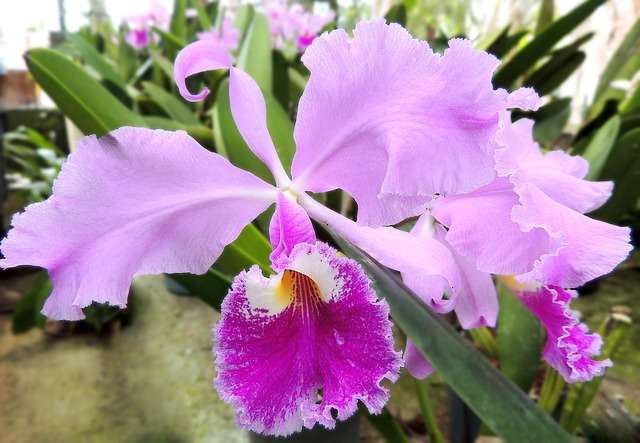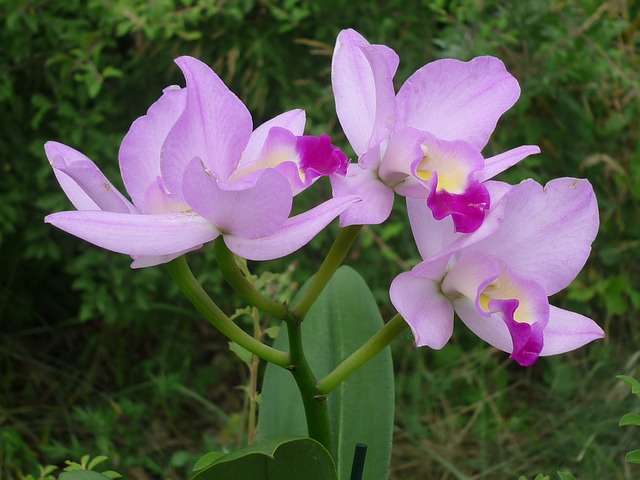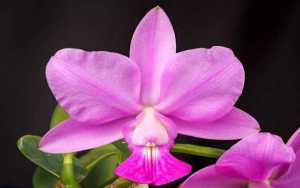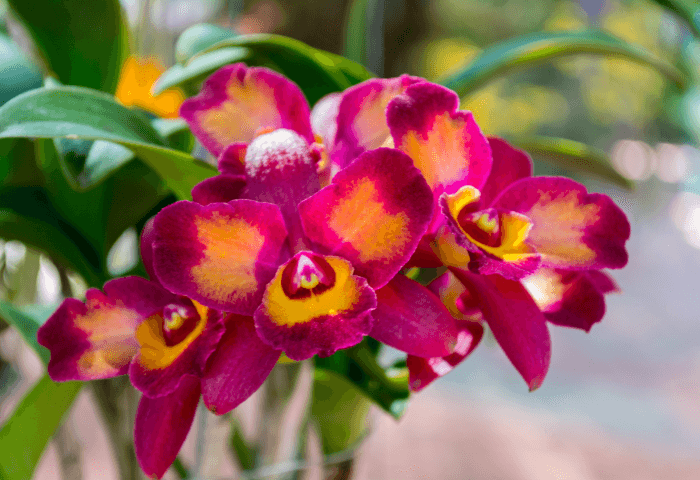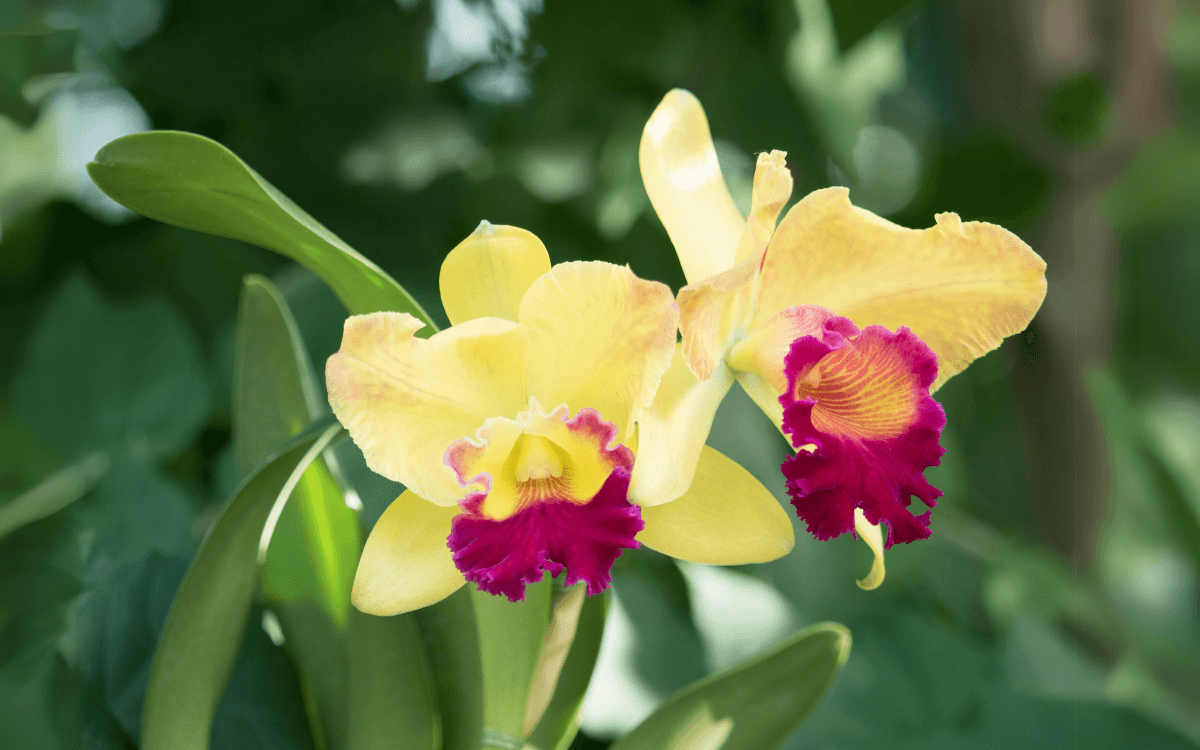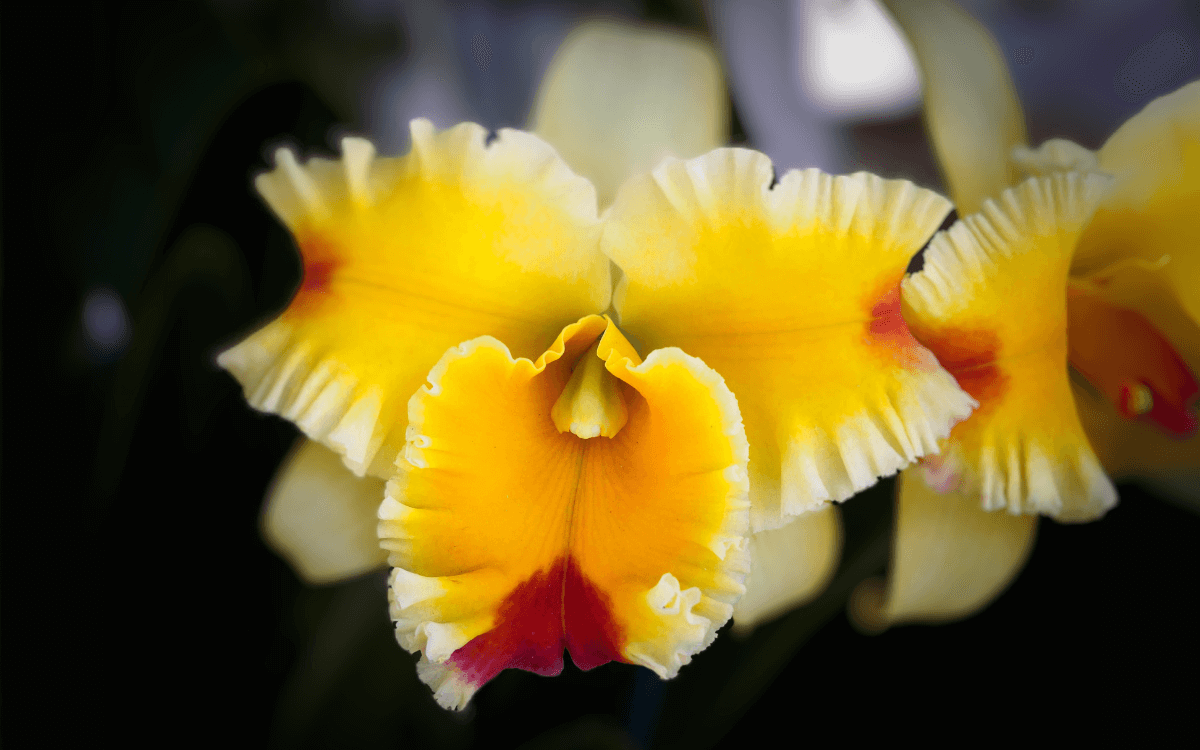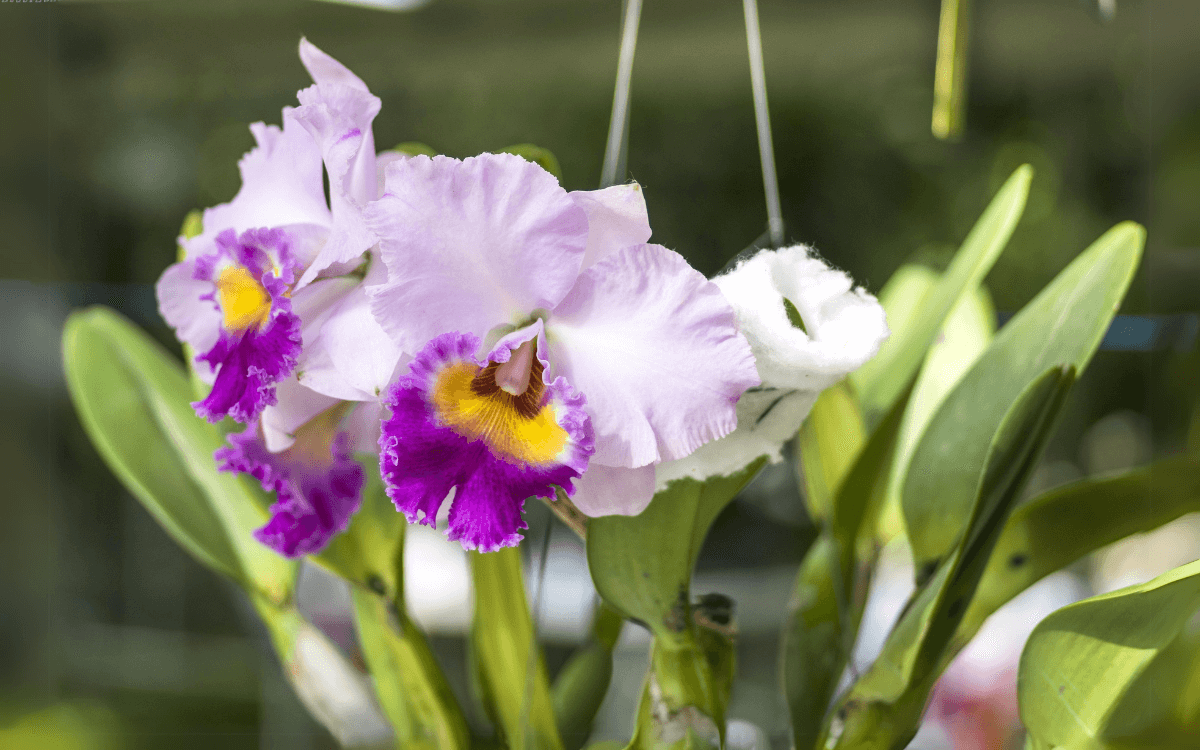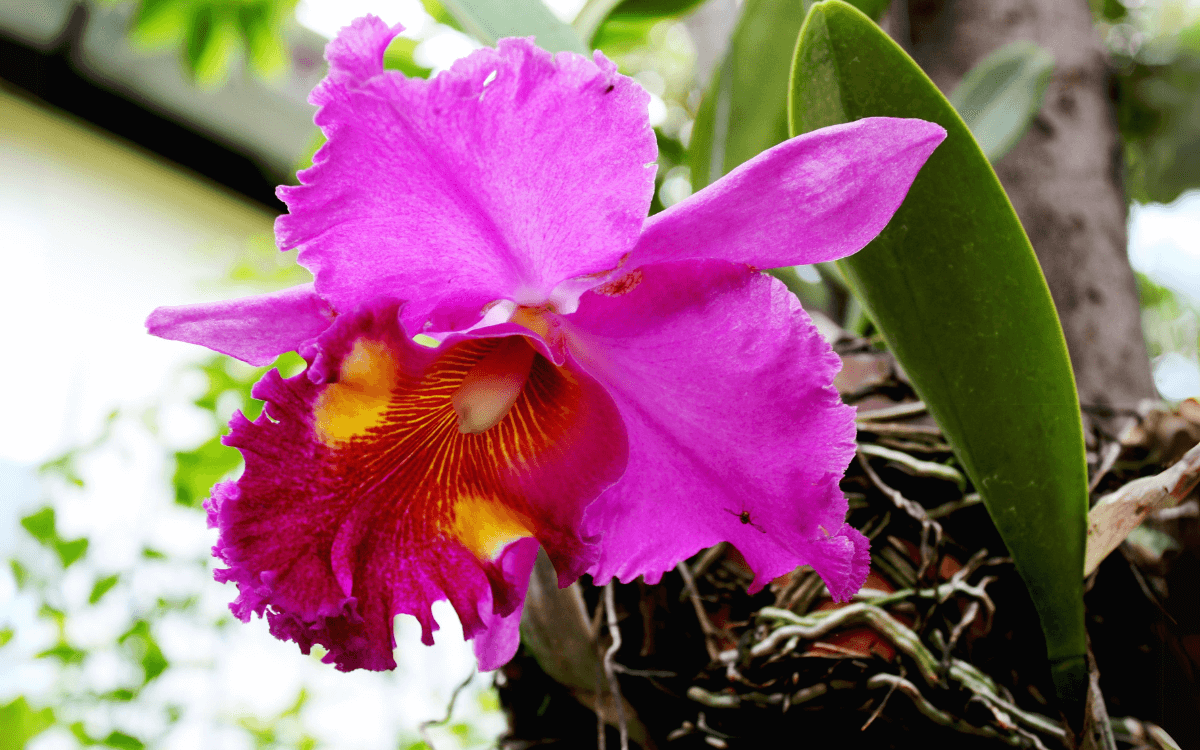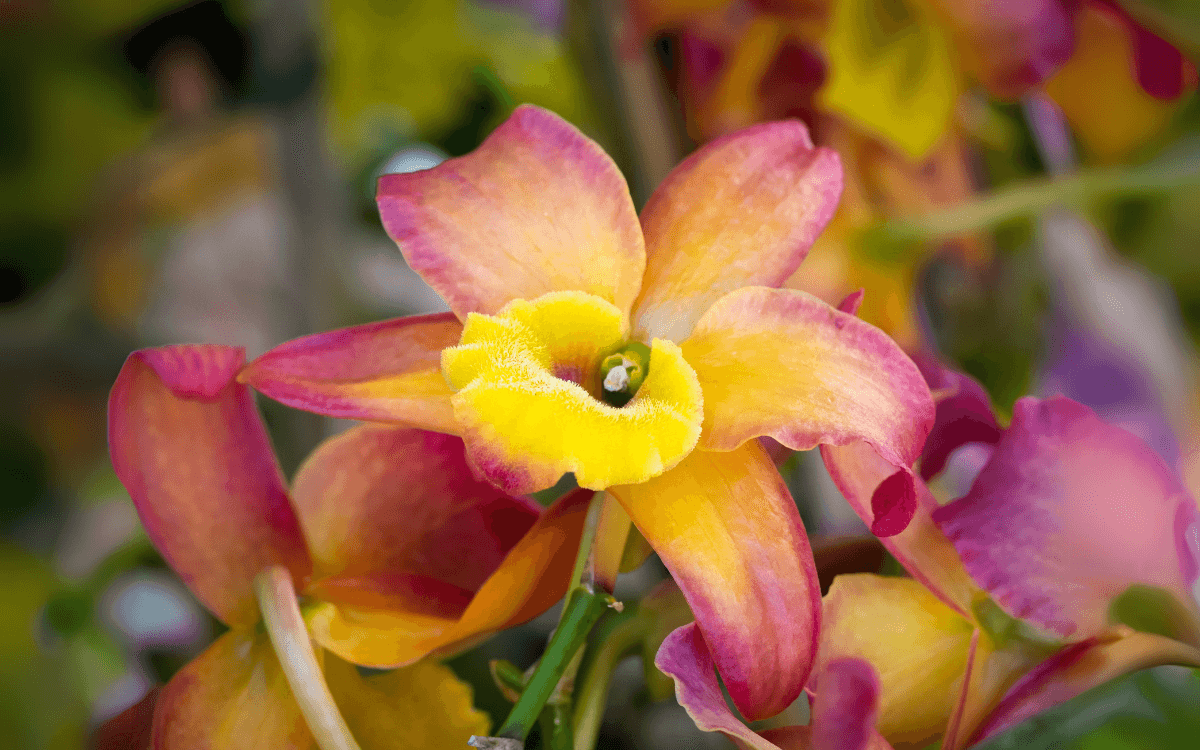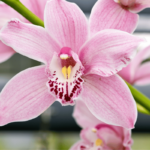Cattleya is a genus of epiphytic orchids found from Mexico to South America, boasting 130 documented species and thousands of hybrids.
These orchids are highly coveted globally due to their ease of cultivation and exquisite blooms. They are especially popular for:
- Specialized exhibitions dedicated to Cattleyas
- Highly valuable species
- Its flowers are very varied and eye-catching
Similar to Laelia and Sophronitis orchids, Cattleyas are mainly epiphytic and easy to care for.
Keep reading to learn more about Cattleya orchids.
Learn How to Achieve Super Blooms on Your Orchids
🛑 If you love orchids and you're tired of not being able to make them bloom...
Then, know that thousands of beginner growers are achieving beautiful flowers on their orchids by following this method.
Click the button below to have beautiful orchids with show-worthy flowers every year. ⤵
How to Care for Cattleya Orchids
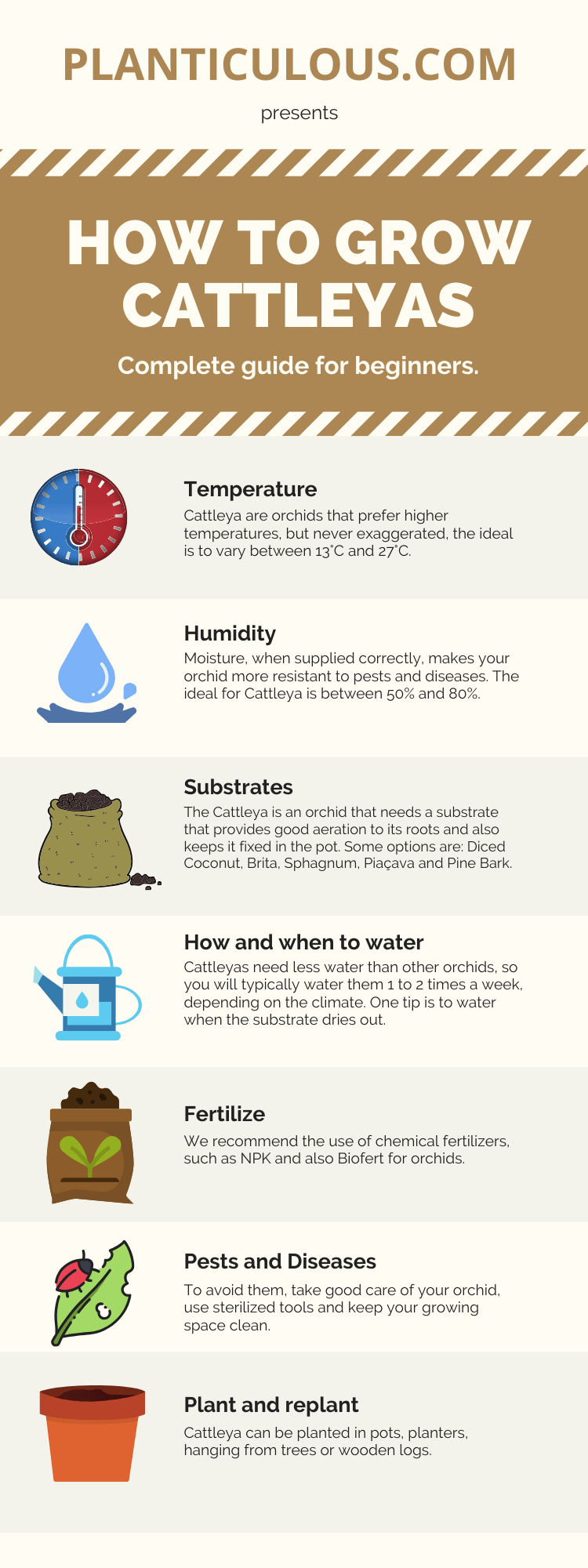
To care for your Cattleya orchid:
- First, pot it or hang it on a tree.
- Choose a good substrate.
- Ensure it’s placed in a slightly warmer location.
- Avoid direct sunlight exposure.
These are the basic principles of Cattleya cultivation. Applying these correctly, along with the tips provided in this article, ensures beautiful blooms every year.
If it doesn’t flower, you might face these issues:
- It’s too young; Cattleyas typically bloom between 4 and 7 years old.
- Incorrect cultivation practices.
The care tips below apply to most Cattleyas, so they’re likely to work for your orchid too.
1 – Temperature
Ideal temperature is crucial for any orchid. With suitable temperatures, they:
- Develop better
- Become more resistant to fungi
- Have better blooms
Cattleyas prefer slightly higher temperatures, not excessive ones.
Ideal conditions are:
- Daytime: 21 °C to 27 °C (70°F to 81°F)
- Nighttime: 13 °C to 16 °C. (55°F to 61°F)
Around 6 hours of sunlight per day are recommended.
They can tolerate temperatures up to 35 °C (95 °F), but it’s not advisable. In such cases, maintain high humidity to prevent damage.
To stimulate flowering, a difference of 8 °C to 11 °C (46,5°F to 52°F) from day to night is necessary.
Remember, most orchids don’t like direct sunlight, so keep Cattleyas in a shaded area. This protection is especially crucial during the hottest hours (10 am – 5 pm).
2 – Humidity
Maintaining proper humidity is essential for orchid care. Good humidity helps Cattleyas withstand heat and diseases.
Ideal humidity for Cattleyas ranges from 50% to 80%.
Maintain humidity by:
- Natural means, depending on your region’s climate
- Placing wet gravel trays near the plant
- Using a damp towel in its vicinity.
However, be cautious of excessive humidity; it can lead to various fungi, bacteria, and diseases, as mentioned earlier. Ensure the area is well-ventilated for water to evaporate effectively.
TIP: To check your environment’s humidity, consult weather forecast websites for humidity information.
3 – Soil for Cattleyas
Cattleyas need a soil that provides good aeration to their roots while keeping them secure in the pot. Suitable substrates include:
- Coconut husk chunks
- Gravel
- Sphagnum moss (in small amounts)
- Pine bark.
Ensure the rhizome is never buried; this can lead to the orchid’s death.
Additionally, over time, the substrate becomes old and needs replacement. To determine if it’s time, check if it:
- Retains too much water
- Releases excess water without remaining damp.
If either is true, it’s time to change the substrate. Old substrates can be harmful as they dissolve, emitting toxic gases harmful to the plant.
4 – Watering: How and When
Unlike Vanda orchids, which cannot store water, Cattleyas have efficient water-storing stems.
Hence, they require less water than other orchids.
Watering should be done approximately once a week during colder months and twice a week during warmer months. When watering, ensure the entire substrate gets moist, allowing water to drain from the pot’s bottom.
This prevents water accumulation on flowers or leaves, eliminating potential issues.
Similar to Phalaenopsis orchids, water your orchid in the morning.
Proper watering ensures your orchids’ health and enhances blooming.
It’s recommended to:
- Use warm water, preferably rainwater or water boiled and cooled for a few hours.
- Water in the morning, preventing overnight dampness that can lead to diseases like black rot.
Note: The article on orchid care teaches an even more efficient method to determine when to water your orchid.
5 – Fertilizing
Fertilizing provides essential nutrients for your orchid’s development. Typically, chemical fertilizers like NPK are most effective for orchids. These represent the three primary nutrients all plants require:
- N -> Nitrogen
- P -> Phosphorus
- K -> Potassium.
Fertilizers are labeled with NPK, indicating the nutrient composition.
For example, an NPK 10-30-20 fertilizer contains more phosphorus and less nitrogen.
Here are some fertilizer tips for this orchid:
- The best fertilizers for Cattleyas are NPK types, with NPK 30-10-10 and NPK 20-20-20 being highly recommended.
- Apply fertilizer to the roots or substrate, avoiding contact with leaves and flowers.
- The best time to fertilize is early in the morning when the sun is mild to prevent burning your plant.
6 – Pests and Diseases
All orchids require specific care to prevent pests and diseases.
Common diseases affecting Cattleyas include:
- Water Spot
- Black Rot
- Sclerotium Wilt (Sclerotium rolfsii)
Common pests for Cattleyas include:
- Mealybugs
- Aphids
- Bedbugs
- Slugs
- Snails.
To prevent these issues, follow these techniques:
- Maintain the ideal humidity for your orchid
- Keep the area clean
- Clean your substrate before potting your orchid
- Ensure it’s at least 40 cm away (16 inch) from other plants.
- Sterilize your scissors before using them on your orchid
Do You Want to Learn How To Keep Your Orchids Healthy And Ready to Bloom Every Year?
So, I prepared a complete guide, step by step and illustrated, that will show you:
• The secrets to getting beautiful flowers every year
• How to fight and identify pests and diseases on your orchids
• THE MAGIC SUBSTANCE for orchids and how to use it
• And much, much more.
The great news is that the manual is now available at a super discount!!
But beware, it's only for the first buyers.
Click on MORE INFORMATION below and discover the secrets to show-worthy flowers. 👇
7 – How to Plant Cattleya Orchids
Cattleyas can be planted in the following places:
- Pots
- Orchid wood basket
- Hung in various locations (pieces of wood, trees, walls, etc.)
Additionally, they can be planted both indoors and outdoors, as they will adapt to both environments.
Below are some mistakes to avoid when planting your orchid:
- If you choose to plant it on a tree or in a pot inside your house in a location that does not protect it from direct sunlight, it will likely die.
- If you choose to plant it in a very shady place where there is hardly any light, it will likely become weak and die.
The tip is to choose a location that provides the ideal conditions for its health.
7.2 – How to Repot
To repot your Cattleya, you should first check if it fits into any of these 4 conditions.
- The substrate is old: this happens approximately every 2 or 3 years.
- Plant is too big for the current pot: your orchid no longer has room to grow.
- You want to change the pot: perhaps the pot is broken, or you bought another one that you found better.
- You want to create a new plant: in this case, make sure you have at least 6 leaves to divide, 3 for each pot.
If the answer is positive for any of these reasons, it’s time to repot your orchid.
The best time to repot is during the growth period, when new shoots begin to appear.
Never repot shortly before or during flowering, as this will stress your plant and could kill it.
To repot it in a pot, follow the steps below:
- Remove it from the pot very carefully.
- Clean its roots.
- Place soil at the bottom of the new pot (polystyrene or gravel).
- Add the chosen substrate to almost halfway up the pot (pine bark, sphagnum moss, etc.).
- Insert the plant on the side of the pot.
- Add the rest of the substrate covering the orchid’s roots.
- Add a stake (optional).
After this, make sure the chosen location for your orchid is ideal for its cultivation. Protected from direct sunlight, clean, with good humidity, ventilation, and temperature.
Leaf Signals
One of the things I like the most about orchids is that they give us signs of what they need.
And one of the most famous signs they give us is with their leaves, indicating whether they need to increase or decrease their exposure to the sun.
- Leaf with a darker green than normal: they need more sun.
- Leaf more yellowish than normal: they need less sun.
To identify this, you need to know what the normal color of your orchid’s leaves is so that you don’t get confused.
Now, if you want to learn more about these tips that orchids give us, check out the article spots on orchid leaves.
To cultivate your Cattleya well, you need to learn some basic things; these things are:
Main Species
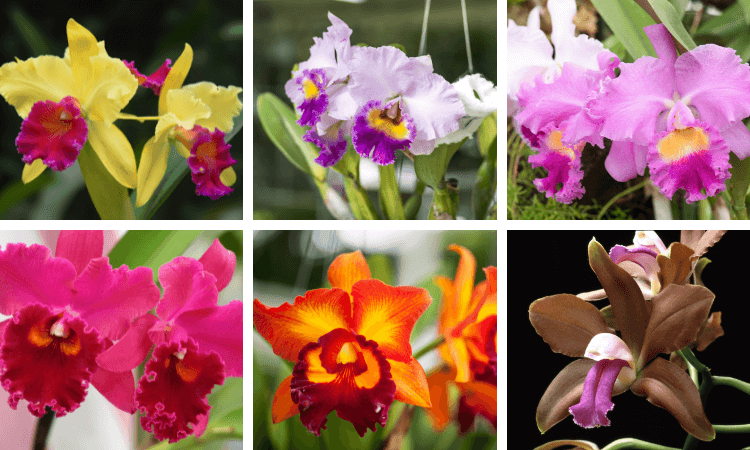
With more than 100 species and several hybrids, the main Cattleya species are:
- Cattleya Aurantiaca
- Cattleya Chocoensis
- Cattleya Elongata
- Cattleya Intermedia
- Cattleya Intermedia Type AD
- Cattleya Labiata
- Cattleya Walkeriana
Some of these species stand out here in Brazil for their popularity, and others are famous worldwide.
We’ll talk more about these species below.
Cattleya Aurantiaca
The Cattleya aurantiaca is a considered a small-sized Cattleya.
Its pseudobulbs are cylindrical and covered with two leaves.
It reaches an average height of 45 to 61 cm (18 to 24 inch).
Its flower has a width of 2.5 cm (1 inch).
Its flowers form at the top of a stalk, and some of these flowers may not fully open.
They typically have warmer colors like red or orange but can range to yellow and, more rarely, white.
Fun fact: aurantiaca is highly sought after by orchid enthusiasts, especially for being an orange Cattleya.
Cattleya Chocoensis
The Chocoensis, a medium-sized Cattleya, features 20-23 cm (7,8 to 9 inch) tall pseudobulbs with dark green leaves. Blooms, around 16 cm (6,3 inch) in size, emit a pleasant fragrance and usually start in spring.
Cattleya chocoensis produces about 2 to 4 flowers on a stem. Some flowers may not fully open.
Regarding its color, they can have yellow, purple, or white flowers with pink spots (more common).
Cattleya Elongata
Considered a large orchid.
Cattleya elongata has narrow pseudobulbs that grow up to 60 cm (23,6 inch) tall.
They have 2 or 3 leaves that range from 20 to 60 cm (7,9 to 23,6 inch) in length each.
Its flower size is about 8 centimeters on average, and it has 2 to 10 flowers per spike.
Its flowers are fragrant, coming in various colors.
Cattleya Intermedia
The Cattleya intermedia received this name because of the size of its flowers, neither too large nor too small compared to other Cattleyas.
Native to Brazil, it appears from the southern coast to the Atlantic Forest of São Paulo.
Its pseudobulbs are cylindrical, ranging from 0.5 to 2.0 cm (0,2 to 1 inch) in thickness (do not confuse with height).
It produces many flowers due to the great resistance of its pseudobulb.
Cattleya Labiata
The Cattleya labiata has club-shaped pseudobulbs with grooves where water runs off, and a single leaf.
They typically reach 25 cm (10 inch) in height.
They have an average of 2 to 5 flowers, each measuring 15 to 20 cm (5,9 to 7,9 inch), and exhibit a wide variety of colors in their flowers.
Cattleya Walkeriana
The Cattleya walkeriana is a Brazilian orchid discovered in 1839 by George Gardner.
It is found especially in São Paulo, Mato Grosso, and Goiás.
It has club-shaped or fusiform pseudobulbs, with a height ranging from 3 to 12 cm (1,2 to 4,7 inch).
Its flowers can come in various colors, and its wide range of colors has earned it some nicknames.
For example, Cattleya walkeriana with white flowers is called alba.
Curiosities about Cattleya Orchids
Below are some of the main curiosities about Cattleya orchids:
- The Cattleya genus has the largest number of hybrids among orchid genera.
- They inhabit various locations, from sea level to about 2,000 meters in altitude. They can adapt to most Latin American environments.
- They are divided into two groups, the bifoliates and the unifoliates.
History and Origin
They were discovered in the 19th century by accident. When a moss and lichen collector picked some leaves of the Cattleya and took them to England.
Upon arrival, the horticulturist named William Cattley saw these leaves and decided to cultivate them.
After that, this previously unknown plant produced some very beautiful flowers, named Cattleya in honor of William Cattley.
Read too:
- Cattleya Bicolor – How to Care for Them (Step by Step)
- Cattleya Purpurata (Laelia Purpurata): How to Care
- Cattleya Schilleriana – Photos, Characteristics and Care
Unifoliate and Bifoliate Cattleyas
As mentioned earlier, Cattleyas can be divided into 2 groups, unifoliates and bifoliates.
The necessary care to cultivate them is the same in both groups.
There are only a few differences between the two, basically:
- Unifoliate Cattleya: they are smaller, with pseudobulbs that are literally flattened, and they have larger flowers, with larger leaves as well.
- Bifoliate Cattleya: they have cylindrical pseudobulbs that can exceed 1 meter in length. Their leaves are wide, oval-shaped, and smaller than the unifoliates.
Cattleya Flowers
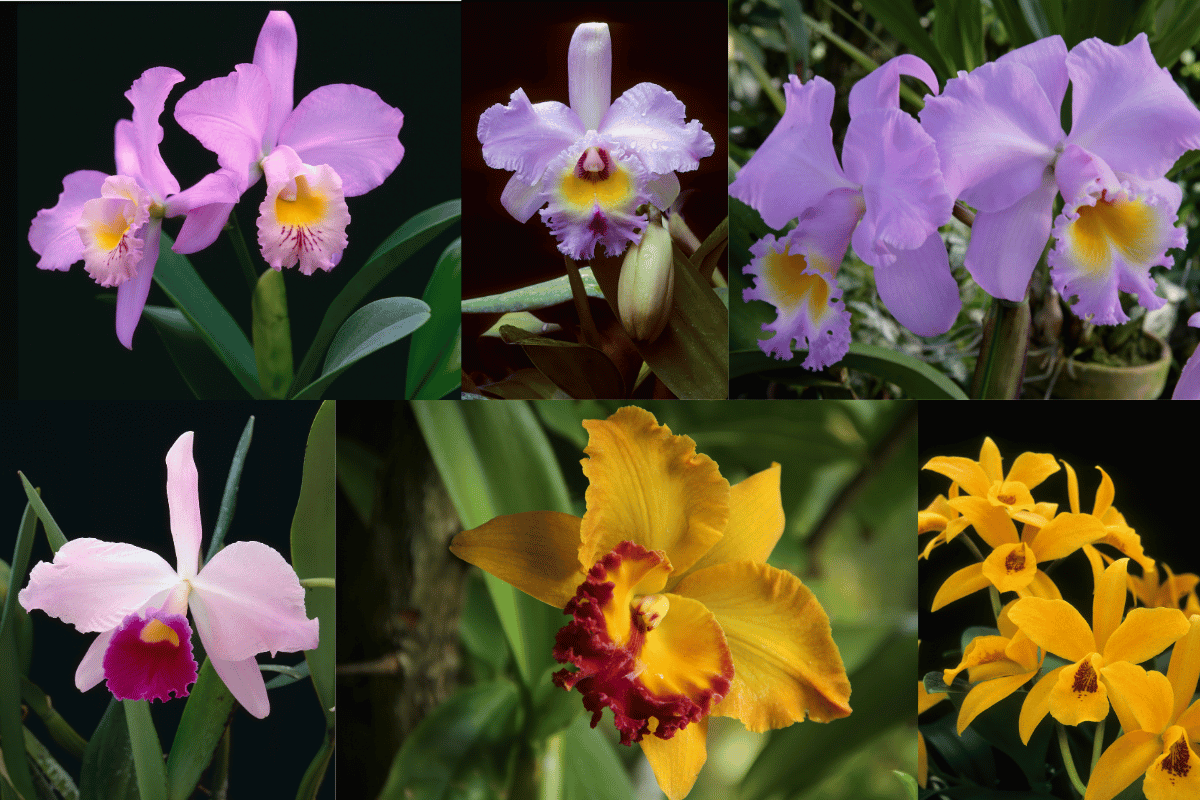
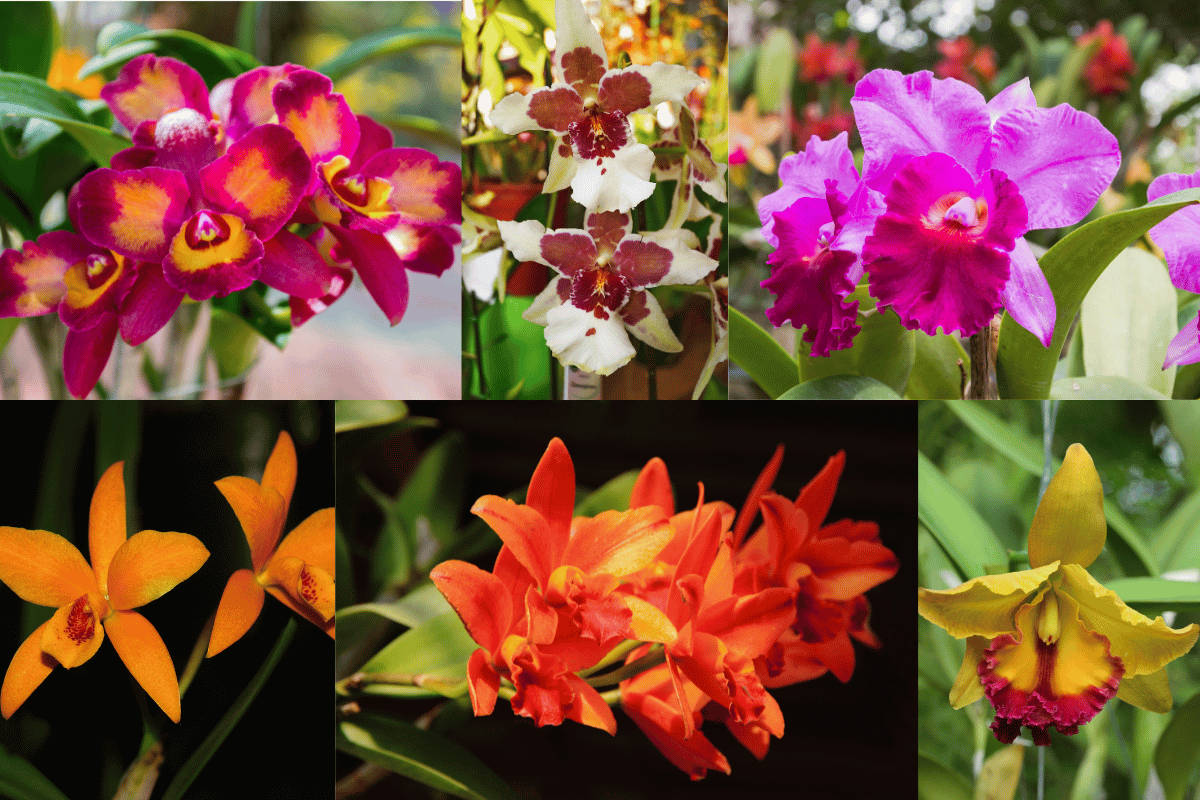
Cattleya flowers are some of the most beautiful among orchid species.
They can come in various colors such as:
- Orange
- Yellow
- Red
- Pink
- White (alba)
- Other colors
Cattleya orchids usually bloom only once a year, and their flowers last an average of 10 to 30 days.
But if well cared for and fertilized correctly, they can have a second flowering in some species.
They have flowers that can vary in size (as mentioned above), but most of them have a very large size.
See below for some tips to improve the flowering of this orchid.
- How to protect the orchid from diseases after flowering: after flowering, there will be a small stem and also a type of straw around it. To remove it, take a sterilized scissors and cut the stem. After doing this, make a cinnamon tea and apply it to the end of the stem where you cut it. This way, the plant will be protected from diseases, and it will help it regenerate.
- How to prevent it from abandoning flowering: during your orchid’s flowering or in the nearest periods, avoid moving it as much as possible, as this can cause it to abandon its blooming.
NOTE: remember to sterilize your scissors again whenever you cut another orchid to avoid spreading diseases.
Photos
Below I have separated some photos of Cattleyas so you can see the beauty of these orchids.
Conclusion
Cattleya orchids are amazing due to their great variety and beauty.
And their cultivation is not very complicated, especially if you follow the tips you learned in this article.
I hope you found this comprehensive guide on caring for Cattleyas helpful.
Feel free to share your own experiences with Cattleya orchids in the comments below — I’d love to hear your stories!


